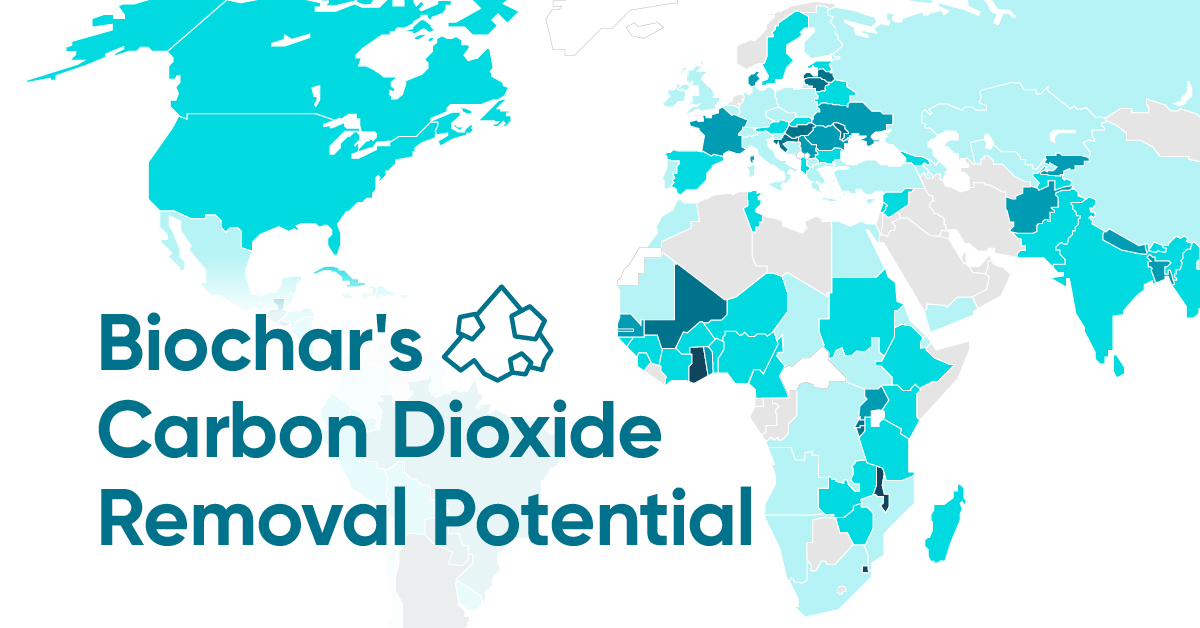What is Biochar and Why Do We Need It?
What is Biochar and Why Do We Need It?
Biochar has the remarkable potential to absorb up to 3 billion tonnes of CO2e every year, which is roughly 6% of the world’s greenhouse gas emissions.
We’ve teamed up with Carbon Streaming to explain what biochar is, and why it is considered to be a game changer for carbon removal and sustainable agriculture.
Biochar’s Big Benefits
To start, biochar—short for biological charcoal—is made by heating organic materials (like agricultural waste, wood chips, or other biomass) in the near or total absence of oxygen, creating a stable form of carbon that resists decomposition and lasts for centuries.
Biochar is commonly referred to as “black gold” as it is valuable for many significant reasons, particularly in the fields of agriculture, environmental sustainability, and climate change mitigation. These include:
- Acts as a carbon sink: Biochar sequesters and stores atmospheric CO2 in a stable form for hundreds or thousands of years, helping to mitigate climate change.
- Improves crop yields: By enhancing soil fertility, water retention, and nutrient uptake, biochar creates a healthier environment for plant growth, leading to higher yields.
- Enhances soil fertility: It absorbs and retains nutrients within the soil, making them more accessible to plants and minimizing leaching.
- Reduces methane emissions: Biochar promotes soil conditions that suppress methane-producing organisms, thus cutting down on methane emissions.
- Utilizes waste: Turning agricultural and organic residues into biochar not only provides a valuable soil amendment but also reduces landfill waste.
Biochar production is a valuable carbon removal technology that can help achieve net-zero emissions because of these powerful benefits.
Biochar’s Emissions Removal Potential
The data we used comes from a study conducted by Lefebvre et al. and highlights global biochar carbon dioxide removal potential as a percentage of total national GHG emissions in 2020.
It states that biochar could remove a minimum of 10% of national emissions in more than 25 countries, primarily concentrated in Africa, South America, and Eastern Europe. In Africa for example, Eswatini’s potential for sequestering emissions was as high as 32%.
Meanwhile in South America, Argentina, Brazil, and Paraguay could significantly reduce their carbon emissions by 24%, 16%, and 13%, respectively, thanks to biochar.
Regions with limited biochar impact often have dry climates, which naturally constrain agricultural production—the main source of biomass residue for biochar.
A Versatile Solution
Biochar is gaining popularity due to the pyrolysis (heating) process used to make it, which is a well-established technique that has been refined over more than a century. As a result, the production of biochar can be scaled from small, local systems to large industrial operations, making it a flexible solution that can be adapted to different needs and locations.
These attributes make biochar not just a tool for carbon removal but a versatile and powerful solution that addresses various environmental, agricultural, and economic challenges.
Carbon Streaming is advancing high quality carbon removal projects with carbon credit streams on two biochar production facilities in the United States: Waverly Biochar in Virginia and Enfield Biochar in Maine.

Learn more about Carbon Streaming’s Biochar projects.

-

 Green1 day ago
Green1 day agoThe Carbon Footprint of Major Travel Methods
Going on a cruise ship and flying domestically are the most carbon-intensive travel methods.
-

 Green2 weeks ago
Green2 weeks agoRanking the Top 15 Countries by Carbon Tax Revenue
This graphic highlights France and Canada as the global leaders when it comes to generating carbon tax revenue.
-

 Green2 weeks ago
Green2 weeks agoRanked: The Countries With the Most Air Pollution in 2023
South Asian nations are the global hotspot for pollution. In this graphic, we rank the world’s most polluted countries according to IQAir.
-

 Green2 weeks ago
Green2 weeks agoTop Countries By Forest Growth Since 2001
One country is taking reforestation very seriously, registering more than 400,000 square km of forest growth in two decades.
-

 Green3 weeks ago
Green3 weeks agoRanked: Top Countries by Total Forest Loss Since 2001
The country with the most forest loss since 2001 lost as much forest cover as the next four countries combined.
-

 Agriculture2 months ago
Agriculture2 months agoThe World’s Top Cocoa Producing Countries
Here are the largest cocoa producing countries globally—from Côte d’Ivoire to Brazil—as cocoa prices hit record highs.



